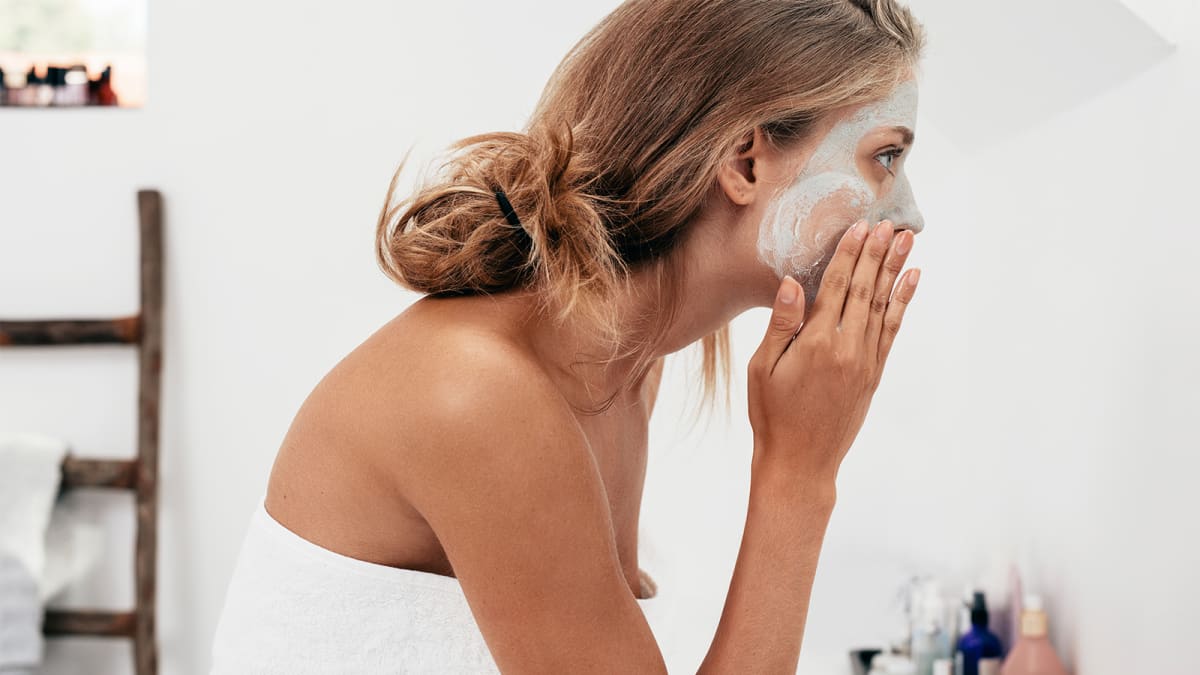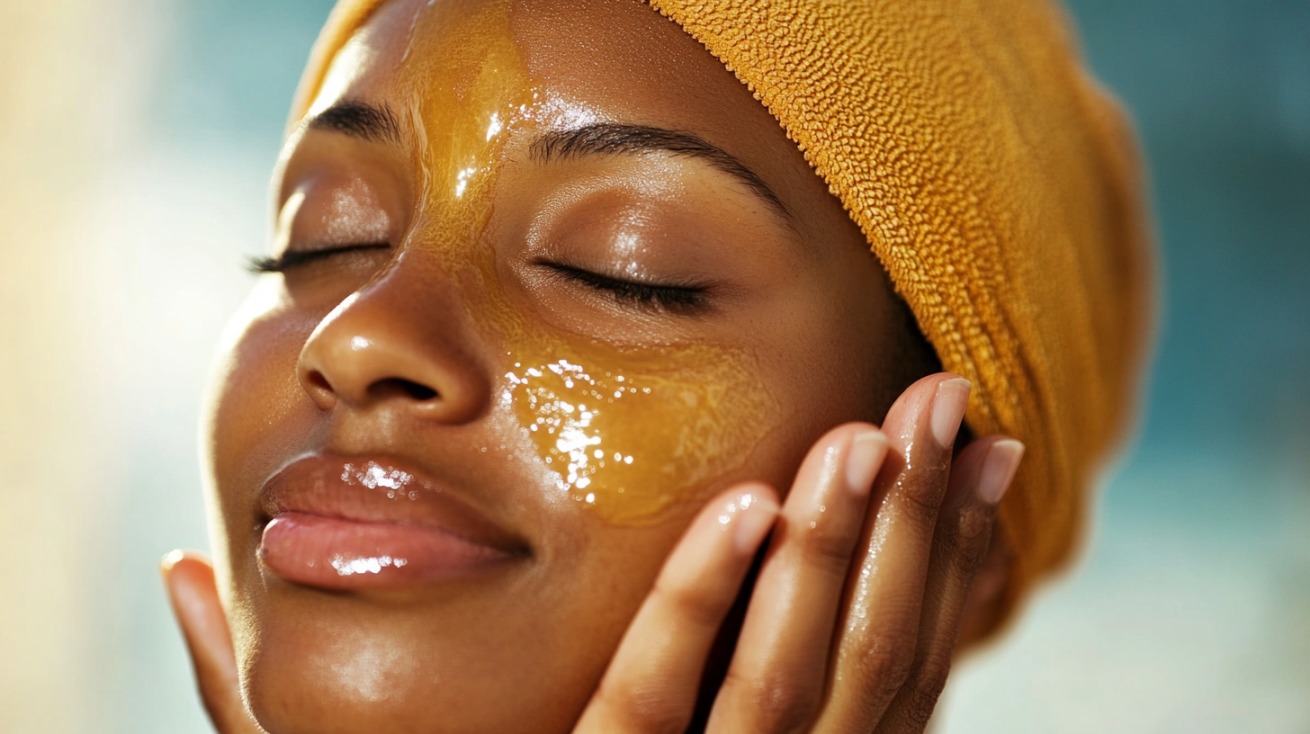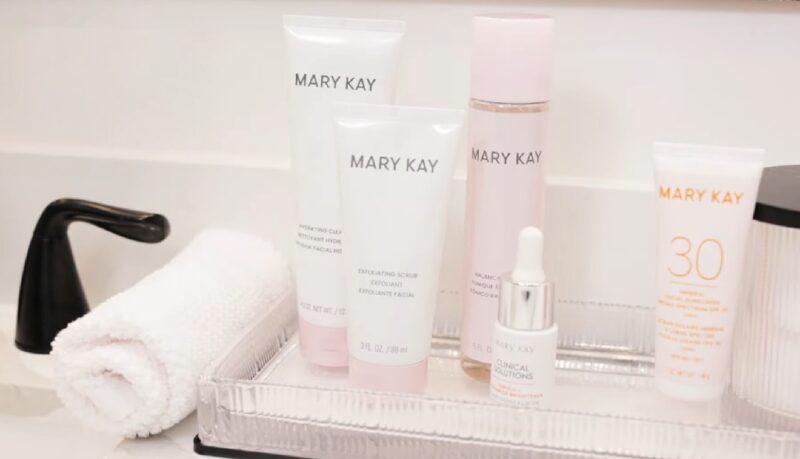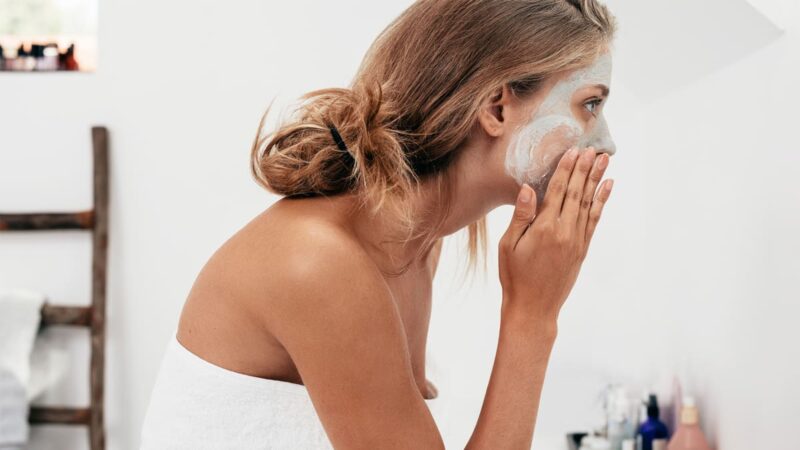
Share Post:
Applying moisturizer should bring relief, not discomfort. A soothing product is expected to calm dryness and restore balance. When it causes a burning sensation instead, something has gone wrong. Skin may react instantly or only after repeated use. Several possible causes can explain the irritation.
Some products include ingredients that trigger sensitivity. Others clash with the skin’s current condition or disrupt its natural barrier. Even the right product can feel wrong under certain conditions. Moisturizer should never lead to stinging or heat. When that happens, the product may not suit the skin type or current skin health.
Every case deserves careful attention. Tracing the exact cause can help prevent future reactions and protect skin health. A burning response should never be ignored. Knowing what causes it can lead to better choices and safer results. Each possible factor below will guide you toward understanding what your skin may be signaling.
Irritating Ingredients
Irritating ingredients often rank as the most common reason for a burning sensation after applying moisturizer. Some products contain substances that disrupt the skin’s natural tolerance level.
Once contact occurs, the skin sends signals in the form of stinging, heat, or visible redness. Every skin type reacts differently, but certain ingredients frequently cause discomfort, especially for those with sensitive or compromised skin.
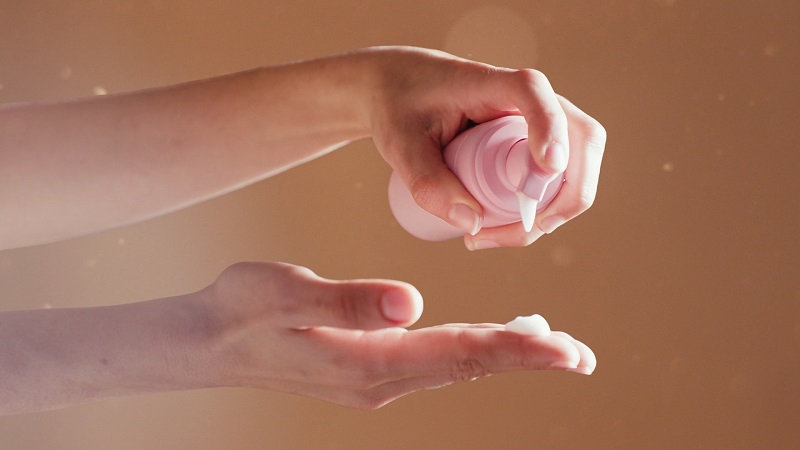
Common Irritants Found in Moisturizers
Several chemical agents are known to provoke a burning sensation:
- Alcohols such as ethanol or denatured alcohol may dry out the skin and create sharp discomfort
- Essential oils like peppermint or eucalyptus can overstimulate sensitive nerve endings
- Artificial colorants and dyes are not skin-friendly and often aggravate delicate tissue
- Acids like glycolic or lactic acid penetrate deeply and may overwhelm the skin barrier
These ingredients serve specific purposes such as preservation, fragrance, or exfoliation. However, they also carry a risk of irritation, especially when overused or combined with other active compounds.
Why Sensitive Skin Reacts Strongly
Sensitive skin lacks a robust outer barrier. Irritating agents can bypass its defenses and enter deeper layers more quickly. That triggers nerve endings and immune cells, which causes a painful or heated sensation. Repeated exposure makes the reaction more severe.
When Reactions Occur Suddenly
Even if a moisturizer was well-tolerated before, ingredients can begin to irritate over time. A compromised barrier, dehydration, or environmental stress can turn a once-safe product into a problem. Skin that is dry, sunburned, or recently exfoliated becomes more reactive to previously harmless compounds.
How to Avoid Irritating Ingredients
Always check the ingredient list before use. Shorter lists often reduce risk. Avoid anything labeled as “fragrance,” “parfum,” or containing alcohol in the top five ingredients. Choose products labeled “for sensitive skin” or “dermatologist-tested.” Those usually exclude known irritants.
A reaction does not always mean an allergy. It often means the formula contains substances that overwhelm your skin’s current condition. If burning persists, switching to a gentle, non-reactive product is necessary. A proper approach to ingredient awareness prevents recurring irritation.
Fragrances and Preservatives
Fragrances and preservatives serve specific roles in skincare products, but both rank high among causes of skin irritation. A burning sensation after applying moisturizer often links to one or both of these.
Even when included in small amounts, they can provoke discomfort, especially for individuals with sensitive or reactive skin.
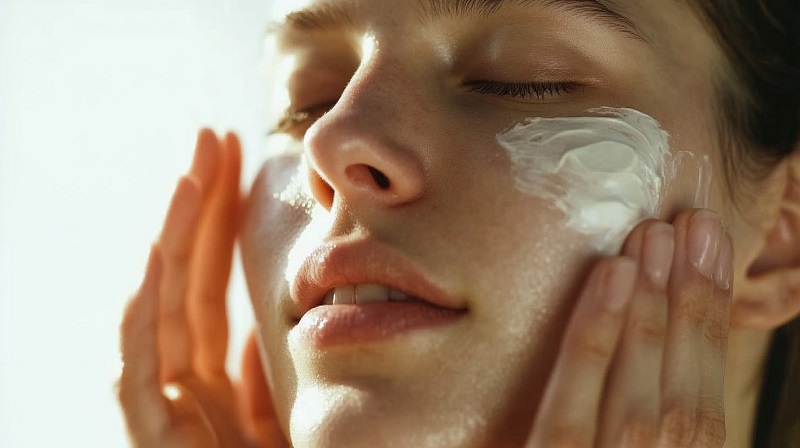
Fragrances: Hidden Irritants
Fragrance compounds are added to enhance scent appeal. Most moisturizers that smell floral, citrus, or herbal contain a mix of synthetic or natural fragrance elements. The problem arises when those components interact poorly with the skin’s surface.
- Synthetic fragrances often contain phthalates or other chemical blends that inflame the skin
- Natural fragrance sources like essential oils can also lead to reactions, especially citrus, lavender, and tea tree
- Unlisted blends under the term “parfum” can mask multiple ingredients that the label does not individually name
Even if a moisturizer claims to use “natural fragrance,” that does not make it safe. Natural oils contain volatile compounds that easily trigger stinging and heat.
Preservatives: Necessary But Problematic
Preservatives prevent microbial growth in skincare products. They help maintain shelf life and safety, but certain ones are more aggressive than others.
- Parabens used to be common but have fallen out of favor due to irritation concerns
- Formaldehyde releasers like DMDM hydantoin or imidazolidinyl urea can release reactive substances on contact with skin
- Methylisothiazolinone (MI) and methylchloroisothiazolinone (MCI) are frequent sources of contact dermatitis
Such preservatives keep products stable, but they may also overwhelm skin that is thin, damaged, or overly dry. Even low concentrations can spark a noticeable burning effect.
Why Reactions Happen Instantly
The moment a product with fragrance or certain preservatives touches inflamed or compromised skin, the reaction begins. Burning, itching, and redness can all follow within seconds. The outermost layer fails to hold back these agents, so they slip through and cause distress at the cellular level.
Safer Options for Sensitive Skin
Look for labels that say:
- “Fragrance-free” (not just “unscented”)
- “Preservative-free” or “minimal ingredients”
- “Sensitive skin formula”
Avoid any product that lists “fragrance,” “parfum,” or chemical preservatives among the first few ingredients. Test the moisturizer on a small skin patch before using it across the entire face or body. A burning response caused by fragrance or preservatives is common, but preventable with careful selection.
Active Ingredients
Active ingredients in moisturizers often serve specific skincare goals. Some aim to exfoliate, brighten, firm, or reduce blemishes. However, these same ingredients can provoke discomfort, especially when skin is unprepared or highly reactive.
A burning sensation may not always signal damage, but it often points to overstimulation or conflict between the ingredient and the skin’s current state.
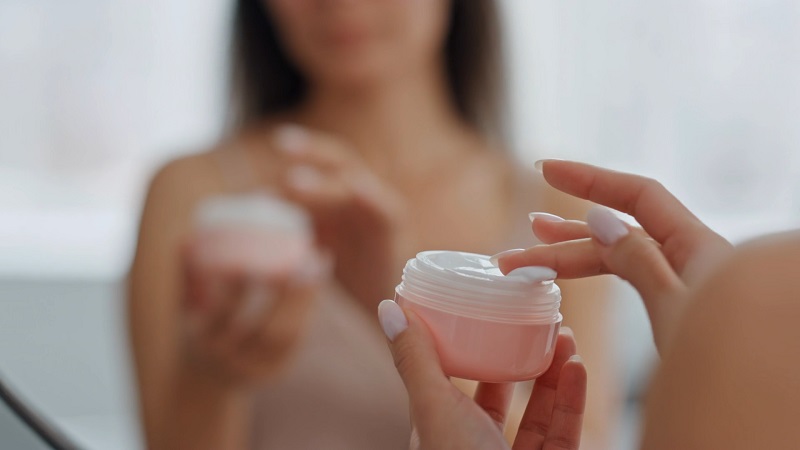
Common Active Ingredients That Cause Burning
Moisturizers containing active components can deliver visible results, but not without risk. Several popular agents tend to cause stinging or irritation:
- Retinoids such as retinol and retinaldehyde work at the cellular level and can thin the skin barrier if overused
- Alpha hydroxy acids (AHAs) like glycolic or lactic acid exfoliate dead skin cells but often create temporary burning
- Beta hydroxy acids (BHAs) such as salicylic acid penetrate deeper and may cause dryness and discomfort
- Vitamin C (ascorbic acid) in high concentrations may cause tingling, especially on sensitive or broken skin
- Niacinamide sometimes produces a warm, burning sensation when introduced suddenly or layered incorrectly
Each ingredient has benefits, but the delivery form, concentration, and skin tolerance determine how the skin will react.
How Tolerance Levels Affect Reactions
Skin needs time to adjust to active ingredients. Using a product too frequently or applying it on already inflamed skin increases the risk of discomfort. Introducing several actives at once can worsen the burning effect.
Moisturizers marketed as anti-aging or acne-fighting often contain more than one active compound. Those combinations may overwhelm sensitive skin or trigger stinging, especially after exfoliation or shaving.
Signs That a Product Is Too Strong
Burning that continues for more than a few minutes or causes visible redness is a clear signal. Peeling, tightness, or prolonged warmth also point to barrier disruption. If skin feels tender to the touch or reacts to water afterward, the active ingredient concentration may be too high.
How to Reduce the Risk
Start with a low concentration. Use the product once or twice a week and increase slowly. Do not layer multiple actives unless directed by a dermatologist. Apply a buffer like a plain moisturizer before using a product with retinol or AHAs to reduce absorption speed.
Active ingredients offer benefits when used correctly. However, any sensation of burning must be taken seriously. Skin health depends on balance, not aggression. If discomfort persists, stop use and simplify your skincare steps. Reintroduce actives only once the barrier is restored and the skin feels calm.
Dry or Damaged Skin
Moisturizers aim to protect and replenish, but dry or damaged skin often reacts with unexpected sensitivity. A burning sensation after application usually signals a compromised barrier, and this was proven by a study by a group of experts from the Department of Dermatology and Venereology in Jakarta.
When skin lacks sufficient hydration or suffers surface injury, it allows ingredients to penetrate too deeply or too quickly.
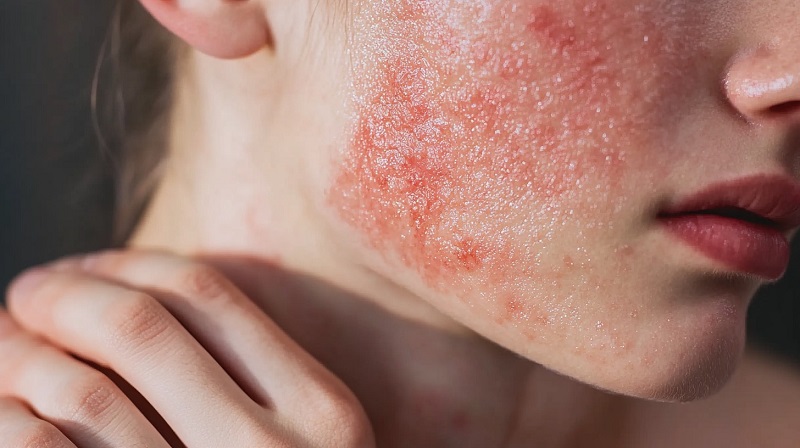
Why Barrier Damage Causes Burning
Healthy skin has a lipid layer that acts as a shield. It holds moisture in and keeps irritants out. Dry or damaged skin lacks this defense. Any substance applied directly contacts nerve endings and exposed tissue, leading to discomfort.
Burning arises when moisturizers seep into microscopic cracks. Even gentle ingredients may sting when the skin barrier cannot regulate absorption. Cold weather, hot showers, harsh cleansers, and overuse of exfoliants often strip away protective oils and leave the skin vulnerable.
Signs of a Compromised Skin Barrier
- Flaky or peeling surface
- Tightness and rough texture
- Red patches or itchiness
- Stinging from water or mild products
These signs indicate that the skin cannot process even routine skincare steps without stress.
Best Approach for Recovery
Choose moisturizers with barrier-repair ingredients like:
- Ceramides to restore structure
- Cholesterol to reinforce hydration
- Fatty acids for replenishing lost oils
- Panthenol and allantoin to calm irritation
Avoid anything with acids, alcohols, or fragrances. Apply moisturizer to slightly damp skin to lock in water. Keep skincare minimal until the skin fully recovers.
Allergic Reactions
An allergic reaction can create immediate burning, redness, swelling, or itching after using a moisturizer. Unlike general sensitivity, an allergic response activates the immune system. The body interprets an ingredient as a threat and responds with inflammation.
Common Allergens in Moisturizers
Some ingredients are more likely to provoke allergic responses:
- Fragrance compounds, both synthetic and natural
- Lanolin, often used in rich moisturizers
- Essential oils like tea tree, citrus, or rosemary
- Chemical sunscreens such as oxybenzone
- Preservatives like parabens or formaldehyde releasers
Even “natural” products may include plant extracts that act as allergens. Skin allergy does not depend on how clean or organic a formula claims to be.
Immediate vs Delayed Responses
Some reactions occur within minutes of application. Others take several hours or even days to show up. Delayed allergic contact dermatitis can confuse users into blaming the wrong product, especially when multiple new items are in use.
How to Confirm an Allergy
Stop using the product immediately. Observe the skin over the next 24 hours. If symptoms worsen or persist, consult a dermatologist. Patch testing may help identify the specific allergen.
Do not reapply the same product “to see if it happens again.” Repeated exposure intensifies the allergic reaction and may cause long-term damage.
Over-Exfoliation
Over-exfoliation weakens the skin’s structure and increases its sensitivity. As experts from Clinikally explain, moisturizer applied on raw, over-treated skin often triggers a sharp or burning sensation. The outer layer loses balance and becomes reactive to even the gentlest product.

Causes of Over-Exfoliation
Exfoliation is meant to remove dead cells and reveal fresh skin. When done too often or with harsh tools, it strips essential layers and leads to irritation. Common causes include:
- Frequent use of scrubs with rough particles
- Multiple acid-based products used in a single routine
- Combining physical and chemical exfoliants
- Using exfoliants on already irritated or sun-exposed skin
The result is skin that feels hot, tender, and inflamed.
Warning Signs
- Tingling or burning after applying any product
- Red, glossy skin that appears tight or stretched
- Flaking in patches despite regular moisturizing
Moisturizers can sting because the protective barrier no longer exists. Every ingredient passes through too fast and too deep.
How to Reverse Damage
Stop all exfoliation immediately. Use a fragrance-free, ceramide-rich moisturizer. Avoid actives like AHAs, retinol, or vitamin C until the skin calms down. Apply gentle hydration twice daily and avoid sun exposure without proper protection.
The skin barrier can rebuild, but only with patience and restraint. Any burning must be seen as a signal to pause and repair.
Incorrect pH Levels
Skin thrives in a slightly acidic environment. Moisturizers with pH values outside the ideal range can throw that balance off. Once disrupted, the skin reacts with burning, stinging, or tightness.
How pH Affects Skin
The skin’s natural pH sits between 4.5 and 5.5. Products that fall outside that range either disrupt the barrier or fail to support healthy enzyme activity. Highly alkaline products (pH 8 or above) strip protective oils. Highly acidic products may corrode tissue if not carefully formulated.
Moisturizers that alter the skin’s pH reduce its resistance to environmental stress. Once that happens, redness, dryness, or irritation follows.
Identifying pH Imbalance
Most commercial moisturizers do not list pH values, but signs of imbalance include:
- Burning after application despite safe ingredients
- Red or flaky patches developing over time
- Skin that reacts to water or mild cleansers
Those signs point to cumulative damage caused by pH conflict.
Restoring pH Harmony
Use moisturizers labeled as “pH-balanced” or “dermatologist-formulated.” Avoid strong acids or soap-based products. Avoid alternating between too many active ingredients, which can shift pH unpredictably. Restore the skin barrier with hydrating, neutral formulas for at least one week before reintroducing any treatment step.
Using Body Lotion on the Face
Body lotions and facial moisturizers are not interchangeable. A burning sensation after using body lotion on the face often results from differences in texture, formulation, and ingredient strength.
Why Body Lotions Irritate Facial Skin
Facial skin is thinner and more sensitive than body skin. Lotions meant for the body often contain:
- Heavier fragrances for masking odor
- Comedogenic oils that clog delicate facial pores
- Thickening agents that create buildup on finer skin
- Increased alcohol content for faster absorption
Each factor can trigger burning, especially if the face is already dry or inflamed.
Differences in Product Design
Facial moisturizers tend to focus on gentle hydration and lightweight texture. They cater to varied skin types such as oily, combination, or acne-prone. Body lotions focus on deep moisturization and often include richer ingredients that are too strong for the face.
Even if a body lotion feels creamy or gentle, it likely includes substances not designed for facial use.
How to Choose the Right Moisturizer
Always select a formula labeled “facial moisturizer.” Avoid applying products made for hands, feet, or general body use. If your current product causes a burning sensation, switch to one with:
- No alcohol
- No synthetic fragrance
- Non-comedogenic rating
- Ingredients like ceramides, hyaluronic acid, or glycerin
FAQs
Can sun exposure before moisturizing cause a burning sensation?
Yes. If the skin experiences intense sun exposure before applying moisturizer, it may become more reactive. Sunburn damages the outer layer and leaves nerve endings exposed. Moisturizers that usually feel neutral may sting or burn when applied to sun-damaged skin. Even basic formulas without irritants can trigger discomfort on freshly sun-exposed skin.
Does applying moisturizer after shaving cause burning?
Yes. Shaving removes both hair and a thin surface layer of skin cells. That creates micro-tears and increased sensitivity. Applying moisturizer right after shaving can lead to a burning or tingling sensation, especially if the product contains alcohol, menthol, or strong essential oils. Use post-shave products designed specifically for sensitive skin to reduce risk.
Can using expired moisturizer lead to a burning sensation?
Yes. Expired moisturizers often break down chemically and may harbor bacteria. Ingredients lose stability and may interact poorly with the skin. A product past its expiration date can become irritating, even if it was once well-tolerated. Always check expiration labels and avoid products with a change in smell, texture, or color.
Does applying too much moisturizer increase the risk of burning?
Yes. Using an excessive amount of moisturizer may saturate the skin and overwhelm its ability to process ingredients. That increases penetration and may push certain compounds into deeper layers, where they provoke discomfort. Apply a moderate, even layer instead. More product does not always equal better results.
Can climate conditions influence moisturizer reactions?
Yes. Cold, dry air or extreme heat may compromise the skin barrier and change how it reacts to skincare. Moisturizers that feel soothing in humid climates might burn when applied in winter or after exposure to wind. Seasonal changes affect hydration levels and skin resilience. Always adapt product choice based on current environmental stress.
Final Thoughts
A burning sensation after applying moisturizer signals an urgent message from your skin. Every sting, flare, or flush deserves full attention. The cause may come from harsh ingredients, barrier damage, or using the wrong product on the wrong skin type. Moisturizers are meant to restore, not inflame.
When they burn, the product choice, timing, or current skin condition must be re-evaluated.
Avoid guessing. Reactions rarely fix themselves. Review ingredient lists carefully, monitor changes in climate or habits, and track how skin behaves before and after application. Products that feel fine in one season or situation may create problems in another. Awareness, not trial and error, leads to healthy skin.
Always listen to the skin’s response. If burning continues or worsens, stop using the product and simplify your routine. A gentle cleanser and plain, non-reactive moisturizer offer the best foundation for repair.
Once balance returns, you can reintroduce new elements carefully, with patience and control. Safe skincare starts with understanding what your skin can accept and what it must reject.



